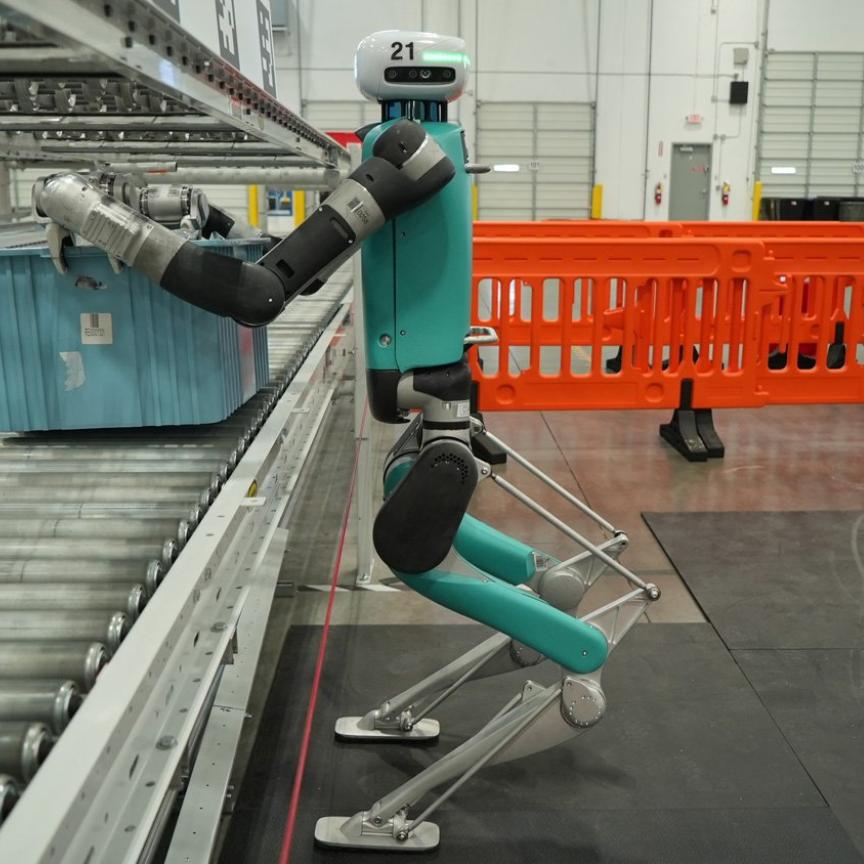Almost three months before the start of automatica, which will take place from June 21 to 24 at the Munich Exhibition Center, one thing is certain: never before has there been such a wide range of collaborative robots as this year. And they are easier to use than ever. The latter also applies to industrial robots. Here, no-code robotics allows an almost playful handling of robots.
These and many other developments pursue one goal: the democratization of robotics. In the future, anyone should be able to operate robots without special knowledge. With cobots, this is already possible thanks to simple programming options. The problem-free integration and operation of these devices are also important reasons for their popularity.
The market for this species is currently growing considerably. Industry leader Universal Robots says it already has over 50,000 cobots in use in all kinds of applications. Kim Povlsen, Managing Director of the Danish company, put the potential for cobots at around nine million units in an interview with the Handelsblatt, and sees the industry on the way to billions in sales.
Cobot is not just a cobot
So it is not surprising that many manufacturers are discovering their love for the cobot. While some qualify their standard robots for direct human-robot interaction by integrating numerous safety features, others rely on the development of special lightweight robots.
In Munich, visitors to automatica can see for themselves the advantages and disadvantages of the two different worlds. However, the hype is clearly with the lightweight cobots. Here, the competition between established manufacturers and start-ups is creating unprecedented dynamics.
Fanuc: targeting market leadership
Fanuc is showing three new cobot models that are characterized by their low weight and intuitive drag-and-drop programming and should therefore also be of particular interest to first-time users. In order to meet the increasing demand, Fanuc not only wants to increase production capacities. Shinichi Tanzawa, CEO of Fanuc Europe, has another goal: "We want to become the clear market leader for cobots in Europe."
What the market companions think of the idea remains to be seen. In any case, Kuka is totally committed to innovation and is presenting the LBR iisy, a cobot that, thanks to a brand new operating system, is also intended to set standards in terms of operation. Set it up, switch it on, get started - that's what Kuka promises.
ABB makes a similar promise. The new cobot families GoFa and SWIFTI should also be particularly easy to use and are characterized by high payloads and speeds. “Our new cobot portfolio is the most diverse on the market,” said Sami Atiya, head of ABB's Robotics & Factory Automation business.
And Yaskawa? The Japanese are showing their HC DTP Cobot series at the automatica under the motto Easy – Smart – No protective fence. With the new Yaskawa ecosystem, the manufacturer offers a variety of proven partner and in-house plug & play products with which the customer can set up his cobot cell in a modular way.
Newcomers and lots of start-ups
Anyone who thinks that only the big industrial robot manufacturers can build cobots will be taught otherwise at automatica. The number of new, young or non-industry manufacturers is growing exponentially and with it the ideas for a wide variety of cobot variants for all possible applications.
For example, igus, previously known primarily as a manufacturer of cable drag chains, is showing the attractively priced plastic cobot ReBeL, which, with a weight of around ten kilograms, lowers the barriers to entry to a minimum. This means that the machine will be used in particular for simple applications where robotics has not previously been worthwhile. Neura Robotics, among others, operates at the other end of the range. With the cobots Lara and Maira, the Swabians present highly developed production assistants with a clean design, speech recognition and outstanding performance.
Between low cost and high end, manufacturers from all over the world, including Comau, Denso, Doosan, Franka Emika, Kassow, Omron, Rethink, Stäubli, Techman and many other cobot solutions for all kinds of applications will be present. Not to be forgotten: Agile Robots, the most valuable German robotics start-up, is also exhibiting at automatica. The latest developments of this company are not only eagerly awaited by large investors.
No Code: barrier-free entry into robotics
The programming of classic industrial robots is also about to undergo a small revolution. Wherever applications allow it, new methods will replace classic high-level language programming in the future. It's not just about giving newcomers a barrier-free introduction to robotics. In fact, no-code robotics can reduce the programming time for many applications by a factor of 70, believe it or not.
At least that's what the young company Wandelbots promises. With its pen programming, the Dresden start-up is turning the programming world upside down. For example, if a welding path needs to be programmed, the user simply traces it with the so-called TracePen. Anyone can do it and it's breathtakingly fast. It also saves expensive programming time. An extraordinary innovation that the automatica audience gets to see.
Like many other robot manufacturers in Munich, Epson is also presenting a no-code programming environment for robotics beginners with little or no specialist knowledge. This allows the manufacturer's four-axis robots to be operated quickly and easily.
A Horst for all cases
Fruitcore Robotics is also taking an interesting approach to adapting the robot programming exactly to the skills of the user. The Constance-based company now offers four software packages for its Horst robots: Starter, Profi, Digital and Premium. If the requirements change, users simply book a different package. This creates maximum flexibility and future security.
The exhibits at automatica prove it: people are finally moving into the focus of developments. And the current level of development suggests that robots will be as easy to use as a smartphone in the near future.

